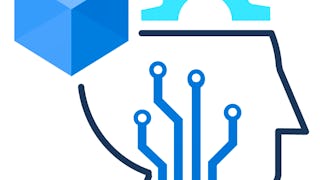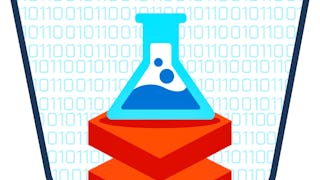Machine learning is the foundation for predictive modeling and artificial intelligence. If you want to learn about both the underlying concepts and how to get into building models with the most common machine learning tools this path is for you. In this course, you will learn the core principles of machine learning and how to use common tools and frameworks to train, evaluate, and use machine learning models.

Unlock access to 10,000+ courses with Coursera Plus. Start 7-Day free trial.

Create Machine Learning Models in Microsoft Azure
This course is part of Microsoft Azure Data Scientist Associate (DP-100) Exam Prep Professional Certificate

Instructor: Microsoft
38,498 already enrolled
Included with
(322 reviews)
Recommended experience
What you'll learn
How to plan and create a working environment for data science workloads on Azure
How to run data experiments and train predictive models
Skills you'll gain
- Artificial Neural Networks
- Regression Analysis
- Scikit Learn (Machine Learning Library)
- Deep Learning
- Image Analysis
- Artificial Intelligence and Machine Learning (AI/ML)
- Microsoft Azure
- Data Analysis
- Data Visualization
- Jupyter
- Pandas (Python Package)
- Exploratory Data Analysis
- Tensorflow
- Data Science
- Unsupervised Learning
- MLOps (Machine Learning Operations)
- PyTorch (Machine Learning Library)
- Predictive Modeling
- Classification And Regression Tree (CART)
- Machine Learning
Details to know

Add to your LinkedIn profile
23 assignments
See how employees at top companies are mastering in-demand skills

Build your Software Development expertise
- Learn new concepts from industry experts
- Gain a foundational understanding of a subject or tool
- Develop job-relevant skills with hands-on projects
- Earn a shareable career certificate from Microsoft

There are 3 modules in this course
Data exploration and analysis is at the core of data science. Data scientists require skills in languages like Python to explore, visualize, and manipulate data. In this module, you will learn how to use Python to explore, visualize, and manipulate data. You will also learn how regression can be used to create a machine learning model that predicts numeric values. You will use the scikit-learn framework in Python to train and evaluate a regression model.
What's included
7 videos14 readings9 assignments1 discussion prompt
Classification is a kind of machine learning used to categorize items into classes. In this module, you will learn how classification can be used to create a machine learning model that predicts categories, or classes. You will use the scikit-learn framework in Python to train and evaluate a classification model. You will also learn how clustering can be used to create unsupervised machine learning models that group data observations into clusters. You will use the scikit-learn framework in Python to train a clustering model.
What's included
7 videos7 readings8 assignments
In this module, you will learn about the fundamental principles of deep learning, and how to create deep neural network models using PyTorch or Tensorflow. You will also explore the use of convolutional neural networks to create image classification models.
What's included
8 videos4 readings6 assignments1 discussion prompt
Earn a career certificate
Add this credential to your LinkedIn profile, resume, or CV. Share it on social media and in your performance review.
Explore more from Software Development
Why people choose Coursera for their career




Learner reviews
322 reviews
- 5 stars
67.39%
- 4 stars
25.15%
- 3 stars
2.79%
- 2 stars
2.17%
- 1 star
2.48%
Showing 3 of 322
Reviewed on Feb 20, 2022
Great course with lots of insights. Definetly worth it!
Reviewed on Dec 3, 2023
Condense but solid course on ML basics. AND first time I was guided in a cloud provider for ML use cases without having to shed tears from frustration. Very good to gain first familiarity with Azure.
Reviewed on Feb 7, 2023
This course is very easy to understand and have a great value for new data science professionals. To the point explanations and engaging content by team Microsoft.

Open new doors with Coursera Plus
Unlimited access to 10,000+ world-class courses, hands-on projects, and job-ready certificate programs - all included in your subscription
Advance your career with an online degree
Earn a degree from world-class universities - 100% online
Join over 3,400 global companies that choose Coursera for Business
Upskill your employees to excel in the digital economy
Frequently asked questions
To access the course materials, assignments and to earn a Certificate, you will need to purchase the Certificate experience when you enroll in a course. You can try a Free Trial instead, or apply for Financial Aid. The course may offer 'Full Course, No Certificate' instead. This option lets you see all course materials, submit required assessments, and get a final grade. This also means that you will not be able to purchase a Certificate experience.
When you enroll in the course, you get access to all of the courses in the Certificate, and you earn a certificate when you complete the work. Your electronic Certificate will be added to your Accomplishments page - from there, you can print your Certificate or add it to your LinkedIn profile.
More questions
Financial aid available,





